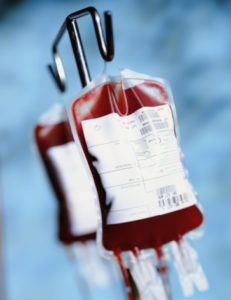The 2017 National Blood Collection and Utilization Survey (NBCUS) used a web-based survey of approximately 3,000 U.S. community-based and hospital-based collection centers and transfusing hospitals. National estimates for the total number of adverse transfusion reactions which required any intervention was 281.8 reactions per 100,000 components transfused in 2017, similar to the 2015 rate of 274.6 reactions per 100,000 components transfused. Life-threatening reactions requiring major medical intervention were lower in 2017 (4.7 per 100,000 components transfused [95% C.I., 3.0-6.4]) compared to 2015 (9.4 reactions per 100,000). Over 99% of all platelets and 96% of whole blood RBCs were leukoreduced in 2017. However, less than a quarter of blood collection facilities and hospitals implemented other blood safety measures. Only 11.3% (16/141) of blood collection centers screened for Babesia, and 19.4% (28/144) used pathogen reduction technology. The percent of hospitals performing secondary testing of platelet units for bacterial contamination increased from 3.8% in 2015 to 5.7% in 2017. Further monitoring of adverse reactions and laboratory trends will help guide additional measures to improve the safety of transfusions.
Show Comments
Comments on this article are closed.

